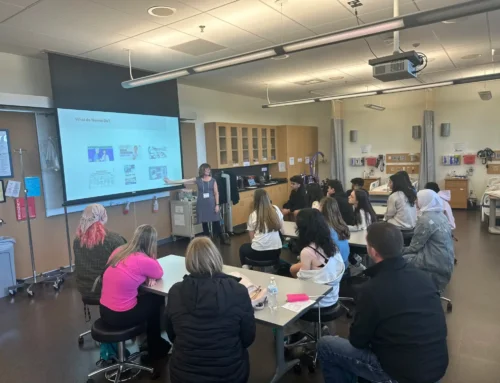Creating a community of writers in a distance learning environment is a major goal for many of our region’s teachers. Writing provides students with opportunities to express their ideas creatively, engage in self-reflection, and develop their own unique voice as a writer. This helps teachers learn more about their students and establish relationships even from a distance. Writing also plays a central role in helping students process and remember information, and it provides teachers with tangible evidence of student thinking and learning. Additionally, student writing allows educators to formatively assess their students and gain important information to inform their instruction.
A common question I am hearing from teachers this school year is, “How do we engage students in writing in our current distance learning or online environment?” When we consider writing in a distance learning environment, it’s important to acknowledge that there are opportunities for students to write using technology as well as with good old pen and paper. Here are some writing strategies and resources to consider to support student writers during both in-person and distance learning.
Getting Students to Write: Generating Ideas in a Low-Stakes Environment: Often, one of the most challenging parts of writing for students is simply getting their ideas down on paper or on the screen. Here are some suggestions for creating a community of writers who put pen to paper (or fingers to keyboard):
- Encourage students to create a Writer’s Notebook: Writer’s notebooks are a place for students to keep story ideas, jot down lists, make sketches, and write freely without the worry of a grade. Having a space to write about their feelings, especially at this challenging time, is important for our students. While there are many websites focused on writer’s notebooks, I’m sharing two of my favorites. One shares ideas about a traditional paper notebook while the other provides insight and tools to create a digital writer’s notebook:
- Implement regular, short writing pieces in your week: Seven-minute writes and other low-stakes writing tasks are designed to be quick assignments that allow students to generate ideas and not worry about their writing being “perfect” or ready to publish. Learn more by checking out these resources:
- Keep the Low-Stakes Writing Flowing (Edutopia article)
- 7-Minute Writes (60-second strategy video)
- Utilize Technology Resources: Because everyone is so incredibly busy right now, a good place to start is to take a closer look at the resources you are already using. Talk to your teacher colleagues to see how they might be using your Learning Management System (LMS) to support student writing. For example, both Canvas and Google LMS allow teachers to record short videos in which they can provide feedback on writing in a more personal, interactive way. Students can collaborate on written work and leave feedback using Google Docs and Slides. There are so many technology tools available to improve student writing instruction in a distance learning environment, and often good ideas can be found simply by talking with your colleagues!
- It’s National Novel Writing Month (NaNoWriMo): This month, people around the world engage in novel writing, and there are many excellent resources on the NaNoWriMo Young Author’s Program. Even if you don’t plan to have your students tackle an entire novel, they have excellent resources including lesson plans, free student workbooks for grades K-2, 3-5, 6-8, and high school, as well as “Pep Talks,” which are letters written by famous authors about both the challenges and joys of writing. Check it out!
Do you have other writing resources or ideas you feel our region’s educators should know about? If so, please send them to kkellogg@nwesd.org.




